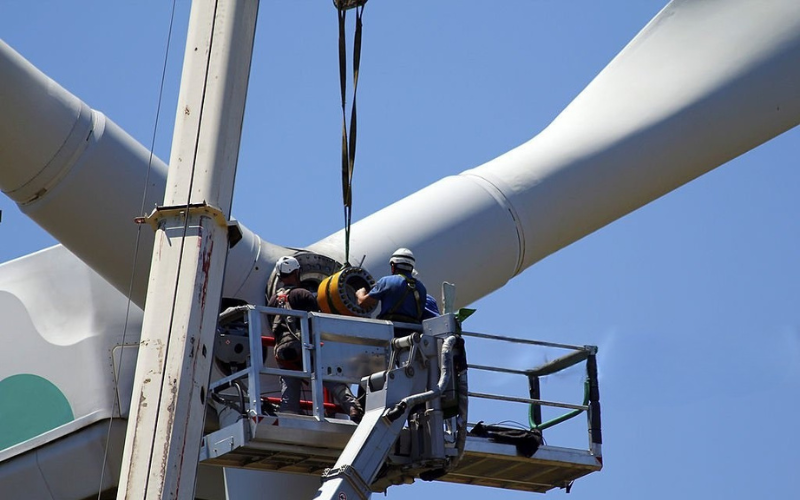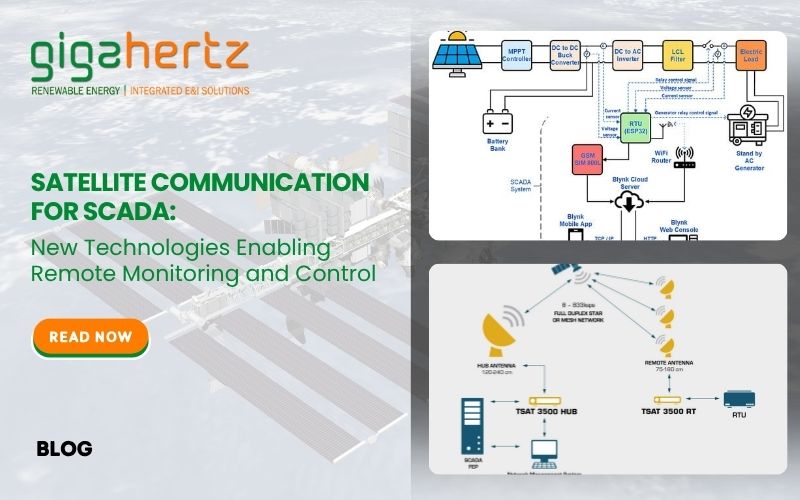
Wind Turbine Generators (WTGs) are intricate electromechanical systems operating under dynamic loads, temperature extremes, and corrosive environmental conditions. Without a robust maintenance strategy, minor mechanical or electrical issues can escalate into significant failures, leading to unplanned downtime and costly repairs.
At GEISPL we specialize in Preventive Maintenance (PM) programs that go beyond routine servicing. Our approach integrates condition-based analytics, OEM-specified schedules, SCADA diagnostics, and reliability-centered maintenance (RCM) principles to enhance turbine availability, efficiency, and ROI.
Why Preventive Maintenance Is Technically Critical
Preventive maintenance isn't just a checklist — it's a data-driven, system-level intervention designed to:
- Detect anomalies in drivetrain components (gearbox, main bearing, generator)
- Prevent fatigue-induced failures in blades and tower structures
- Optimize turbine control algorithms through parameter tuning
- Extend component life cycles through early-stage mitigation
- Maintain SCADA system integrity for uninterrupted remote monitoring
GEISPL’s Multi-Layered Preventive Maintenance Strategy
Mechanical
Subsystem Inspections
- Gearbox Health Checks- Vibration analysis (FFT spectrum), oil particle detection (ferrography), and lubricant condition monitoring to assess gear mesh alignment and wear.
- Main Shaft and Bearing Alignment- Use of laser alignment tools and thermal imaging to detect misalignments or hotspot development.
- Yaw and Pitch Drive Systems- Inspection of hydraulic actuators, pitch motors, slip rings, and bearing lubrication cycles based on duty cycles.
Electrical Subsystem Testing
- Generator and Power Converter Diagnostics- Measurement of insulation resistance (IR), partial discharge testing, and thermal load balancing to prevent electrical faults.
- Transformer and Switchgear Evaluation- Dissolved gas analysis (DGA), thermographic inspection, and relay coordination checks.
- Lightning Protection System (LPS) Continuity Testing- Validation of down conductor resistance and surge protection components using IEC 61400-24 guidelines.
SCADA-Based Predictive Triggers and Alarms
GEISPL's maintenance program integrates SCADA-based fault logging and trend analysis using:
- Rotor speed vs. wind speed curves
- Nacelle orientation efficiency metrics
- Generator reactive power response
- Brake system activation frequencies
Custom dashboards and alert thresholds enable early-stage fault detection, reducing Mean Time to Repair (MTTR) and improving Mean Time Between Failures (MTBF).
Blade Structural Health Monitoring
- Drone-Assisted Infrared Thermography & Visual Inspection- Identification of surface defects, bonding failures, delamination, and leading-edge erosion.
- Lightning Damage Assessment- Internal conductor pathway verification and bonding resistance measurement as per IEC 62305 standards.
- Tip Deflection Monitoring- Comparative analysis using LIDAR or optical sensors to evaluate structural fatigue over time.
Lubrication and Hydraulic System Monitoring
- Automated Grease Systems Inspection- Verification of delivery cycles, nozzle blockages, and pump pressure using onboard diagnostic tools.
- Hydraulic Brake System Checks- Actuation pressure testing, reservoir level monitoring, and hydraulic oil degradation analysis.
Data-Driven Maintenance Scheduling
- Reliability-Centered Maintenance (RCM) Planning- Failure Mode and Effects Analysis (FMEA) and criticality ranking drive scheduling frequency and task prioritization.
- Component Life Tracking- Logging of turbine runtime hours, wind class exposure, and cumulative load cycles helps forecast replacements for major components such as: Main bearings, Gear stages & Control electronics
GEISPL’s Value Proposition
✅ OEM-Compliant Maintenance Protocols
✅ Real-Time Monitoring with CMS and SCADA Integration
✅ Certified Technicians and IEC-Standard Processes
✅ Reduction in Forced Outages by up to 35%
✅ Improved Component Life Span by 20-25%






